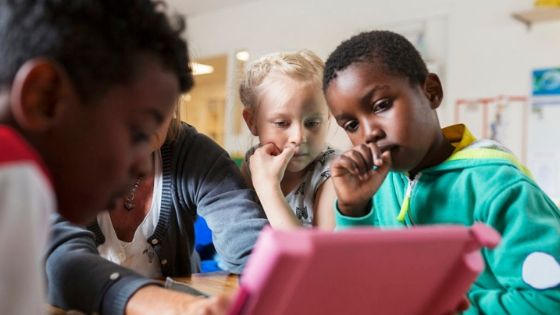Every city is officially back to school. Yay! This means we’re also back to working with parents, schools and districts on building community and improved parent engagement. Possip is a learning tool so we are always thinking about lifelong learning. In that spirit, we wanted to  share some ways that parents and schools can work together to strengthen their student’s lifelong learning.
share some ways that parents and schools can work together to strengthen their student’s lifelong learning.
Waterford, an organization dedicated to equity across learners, shares the importance of parent involvement towards building lifelong learning.
“When parents are engaged in their children’s school lives, students have the home support and knowledge they need to not only finish their assignments, but also develop a lifelong love of learning.”
Lifelong love of learning. Teachers and school leaders are back in classrooms learning and executing on best practices for great classrooms and schools. Parents are also trying to figure out best practices – for everything from getting their kids to do homework with ease, to making sure their kids are learning as much as possible, and figuring out how to make sure the school year becomes one that is fun and engaging. Schools need parent engagement to build the lifelong learning for students.
Everyone wants to build lifelong learning, but parents and teachers alike want to know some best practices to setting up students for success.
So we’d love to share best practices to keep parents and students engaged so that community is built and communication is strong.
- Empowerment: Parents leave their students with schools for multiple hours each day. Nothing helps both parents and teachers like feeling empowered to have conversations that positively impact students openly and freely. Often schools and communities complain about the lack of parent involvement or parent engagement – yet no one shares solutions for how they want to engage parents or what successful parent engagement would look like. Parent would love to feel empowered enough to be engaged but sometimes need information or an extra push.
- Relationships: Combining both, having empowered parents and effective communication leads to a strong foundation for students. Children spend most of their life at school and at home so connections between both will only complement the other. Conversations at home about school – and conversations at home about school – will enrich both environments. A fluid relationship between home and school can help students be successful in both environments. Having every person in a child’s life synchronized makes educating and teaching much more effective.
- Constant Communication: There is actually such a thing as too much communication – but most parents don’t end up feeling like they receive too much communication. On the contrary, parents feel under communicated with.
Part of why parents feel under communicated with is because parents don’t have a way to actually communicate. They have a way to receive information, but not to share back. So schools actually think they have created a conversation or communication with parents, when actually they have pushed out information to parents.Parents need multiple ways to receive information – and ways to share back.Parents want to be able to communicate when it’s necessary – and when it isn’t necessary. Parents love to have consistent and effective methods to provide feedback to their schools. And when parents are not interested in direct feedback, it is always helpful to know there’s an outlet to just check-in. Once parents are given the opportunity to be more involved with their student’s day-to-day, they then become empowered to be a part of the general community, making it a better place for all.
Communication, empowerment and great relationships make for a great home and school community for any child. Eliminating the barrier of communication for parents leads to more communication, empowerment, and great relationships – and a better school year.


